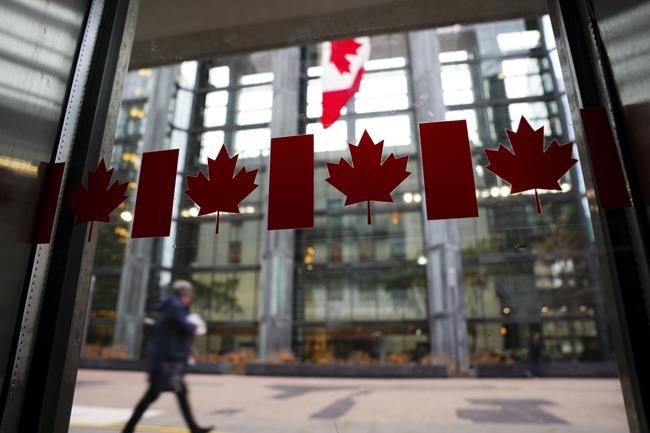OTTAWA — The Canadian economy started off the year with a remarkable recovery from the COVID-19 pandemic, but heading in 2023, high interest rates are expected to take a significant toll.Â
"2022 was quite a rollercoaster," said Randall Bartlett, senior director of Canadian economics at Desjardins.Â
After taking a deep plunge during the pandemic, the economy bounced back this year with strong growth and record-low unemployment. The housing market also boomed thanks to low interest rates spurring purchasing activity.
This exuberance in the economy, however, along with global pressures, led to arguably the most pressing economic issue of the year: decades-high inflation.
In turn, the Bank of saąúĽĘ´«Ă˝ responded to rapidly rising prices with one of the fastest monetary policy tightening cycles in its history, setting the stage for a rockier year ahead.
"We're really expecting to see the rubber meet the road in terms of the implications of interest rate hikes in the first half of next year," Bartlett said.
Since March, the central bank has raised its key interest rate seven consecutive times, bringing it from 0.25 per cent to 4.25 per cent. That's the highest it's been since January 2008.
Canadians and businesses facing higher borrowing costs are expected to pull back on spending more noticeably in the new year. Economists expect that process to slow inflation, though how quickly, is unknown.Â
"The thing that we're looking at is how quickly does inflation come down?" said James Orlando, TD's director of economics.Â
Inflation peaked at 8.1 per cent in June and has been steadily declining since. Last month, the annual inflation rate fell to 6.8 per cent, showing slight but positive progress.
Orlando said TD expects inflation to fall significantly in the new year as growth globally and domestically slow.Â
In its October monetary policy report, the Bank of saąúĽĘ´«Ă˝ forecasted the Canadian economy will stall toward the end of year and into the first half of 2023. That's in line with projections by many forecasters, though some are accounting for a recession in the new year.Â
There have been some early signs that the impending economic slowdown is already underway, with consumer spending declining in the third quarter.Â
As the economy takes a turn, labour groups in particular have been concerned about the effect of interest rate hikes on employment.
However, many economists are optimistic that unemployment won't rise too dramatically given the current tightness in the labour market.Â
In November, the unemployment rate was sitting near record lows at 5.1 per cent.Â
"We are starting the year with very high interest rates, still stubbornly high inflation, but a solid foundation with respect to employment [and] savings for Canadians," said Orlando.
Although Desjardins is one of the forecasters predicting a recession next year, Bartlett said it's not all doom and gloom.Â
"Households are coming into this in a much better position than previous recessions," he said, adding that the economy should recover toward the end of next year.Â
One factor that will influence the depth of the economic downturn is whether the Bank of saąúĽĘ´«Ă˝ will continue to raise interest rates.
After its last interest rate decision in early December, the central bank signalled a willingness to press pause on its aggressive rate hike cycle.
"Looking ahead, governing council will be considering whether the policy interest rate needs to rise further to bring supply and demand back into balance and return inflation to target," the central bank said.
However, forecasters are split on whether the Bank of saąúĽĘ´«Ă˝ is actually ready to stop raising rates.
TD is betting on one more interest rate hike in January, while Desjardins is in the camp of no more hikes.
As high interest rates begin to weigh more noticeably on the economy, discussion is bound to turn to cuts.
Both TD and Desjardins expect the Bank of saąúĽĘ´«Ă˝ to begin cutting interest rates toward the end of the next year, supporting a bounce back for the economy.
"We don't think that the central banks will be able to keep interest rates at these very high levels for too long," Orlando said.Â
This report by The Canadian Press was first published Dec. 23, 2022.
Nojoud Al Mallees, The Canadian Press



